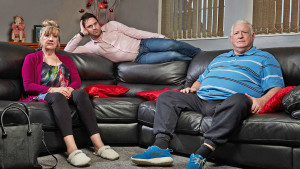While Arts Council-led “Creative Converations” has come up with what you would expect and much of it is common sense, it does repeat the same conversations that have taken place for, say, 30 years.
They still ignore the elephants in the room: overhwhelming reliance on public sector funding, with distain for private sector and self-revenue generation, and lack of audience beyond certain well-funded companies, geographic and specific cultural bubbles, artists-performing-for-artists culture, with a few very exemplorary exceptions.
The attitude is fine if artists are happy to continue as they are (and the Arts Council lacks the courage to speak unpopular truths) but fundamental change still needs a fundamental shift to putting funders and audience centre – not first but as part of the conversation rather than an awkward necessity. If artists are happy to work without funding and audience they can ignore this truth. Otherwise the conversation will go round in the same circles.
Audience is the people who engage AND who DO NOT engage. If you rely on public funds they are your funders. The Arts Council, for example, is just the public servants handing out money on behalf if the audience. Lack of engagement with the audience and therefore the funders is OUR fault and OUR responsibility not theirs. The silos also need to come down. Using jargon, job titles, the sector, the industry, creatives – these are internal terms that form barriers to our audience. We may hate the idea that we should listen to what audiences say or even do not say, in deciding what to make and present, and if we are not publicly funded or do not care about engaging then that is of course fine. Otherwise we are deluding ourselves taking about engagement, relevance, diversity, inclusion. The poppies, for example, did not resonate because an artist came up with the idea of the first world war but tapped into the audience’s existing interest and engaged with it in a way that was clear, relevant, targeted, inclusive etc. It is worth noting it failed when at the Senedd as it became unclear what the communication was.
What conversation?
We need to be more humble, less arrogant, in thinking WE always know what is good for audiences, that they need to be told what they should come to see, that they should engage with OUR art, that our writers and choreographers can lecture them from usually some moral high ground – and, of course, using their money to do so. Complaining that some singers were not of the ethnicity of some opera characters or that a 6f 7ins half Native American did not play a role and protesting that such a heinous crime should force their censoring from an awards scheme must seem very odd to a young unemployed family worrying turning the thermostat to keep the gas bill while watching Britain’s Got Talent. I doubt if they were part of the conversation.
There are calls for more engagement with the broadcast media. What does “broadcast media” mean? Mainstream broadcast media, particularly English language, has no interest in arts in Wales. It covers the odd news story then retreats back into promoting its broadcast activity – that is what it sees as its role. A half-hour weekly good what’s on style arts programme and a planned monthly round-up from an Arts Council funded online platform hardly constitutes a vibrant broadcast media.
There is precious little arts coverage in Wales beyond entertainment and what’s on in what remains of the rapidly dying print media and continuing mergers will make this even worse. The online sites of such organisations do not carry arts coverage as it does not generate traffic. There are commercial listings magazines but the editorial is largely bands and linked to adverts, so if you buy an advertisement you get coverage. There is an Arts Council propped up magazine that is run by local uni lecturers and there are some small niche publications and a publicly-funded Welsh language platform. Arts Scene in Wales is the only all-Wales, bilingual (in part) arts platform that is written by arts journalists and provides a platform for artists. Currently it is the only independent platform with no government (Arts Council etc) funding nor taking advertisements.
There is also talk of ‘having the right people at Government table’? Are we standing for election? Are we joining Labour / Momentum, Plaid? Are we paying lobbying firms made up of ex public paid employees? Take funding risks? Whose funds? Whose risks? Most companies let alone individual artists in Wales struggle to put on ANY work as R&D replaces proper funding. Where is the chance for any innovation let alone risk.
Perhaps we start a conversation from this basis rather than rotating the wheel again, banging the same drum, rehearse the well-known arguments with perhaps / hopefully a new generation of artists – and start talking to audiences and non-audiences.

Very interesting.